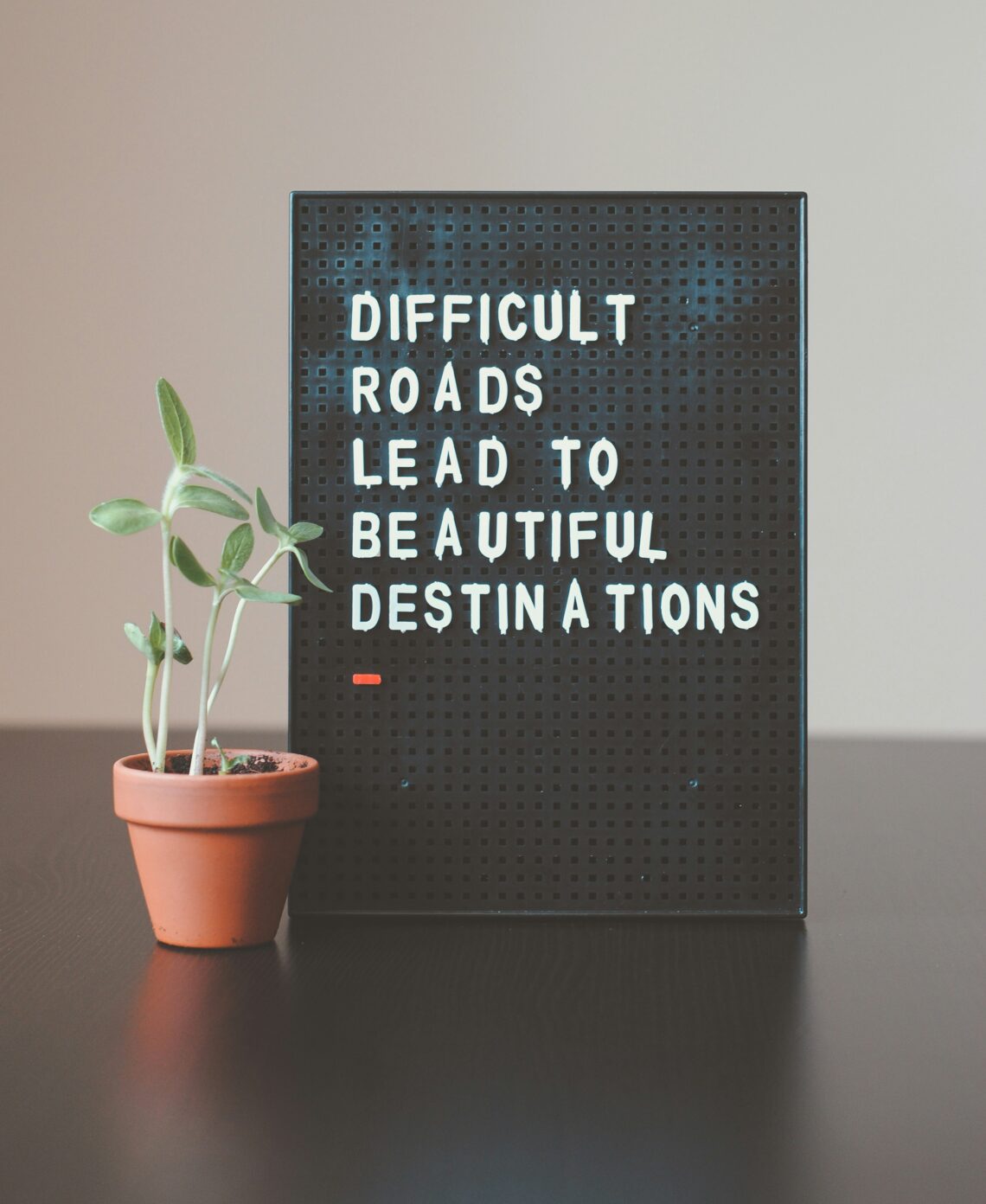Embracing Mindfulness for a Balanced Life Experience
In a world that often feels like it’s spinning faster than a rollercoaster, we find ourselves yearning for balance. It’s no secret that life can sometimes resemble a chaotic circus act—juggling responsibilities, deadlines, relationships, and let’s not forget our own internal dialogues that can get downright noisy. So, how do we keep our sanity while navigating this whirlwind? Enter mindfulness, a practice that’s gaining traction faster than a viral cat video. But what exactly is mindfulness? And how can it lead us to a more balanced life experience? Buckle up, dear reader; we’re about to embark on a journey through the serene fields of mindfulness and its impact on our daily lives.
What is Mindfulness?
At its core, mindfulness is the art of being present—fully engaged in the moment without judgment or distraction. It’s like taking off your headphones in a bustling café and actually listening to the chatter around you, rather than zoning out to your favorite podcast. Jon Kabat-Zinn, the founder of the Mindfulness-Based Stress Reduction program, defines mindfulness as “the awareness that arises from paying attention, on purpose, in the present moment, non-judgmentally.” Sounds simple, right? Yet, in practice, it can be a bit more challenging. (I mean, how often do we catch ourselves ruminating about that embarrassing thing we said five years ago?)
The Science Behind Mindfulness
Scientific research has made a strong case for mindfulness, revealing how it can positively affect our mental and physical health. A significant number of studies suggest that mindfulness practice can reduce stress, anxiety, and depression. For instance, a meta-analysis published in the journal Psychological Bulletin found that mindfulness-based interventions significantly improve mental health outcomes. But wait, there’s more! Not only does mindfulness bolster our emotional well-being, it also enhances our cognitive functions, such as focus and decision-making. It’s as if mindfulness serves as a mental reset button, allowing us to tackle life’s challenges with clarity and calm.
How Mindfulness Enhances Daily Life
Now, let’s get practical. You might be wondering how embracing mindfulness can lead to a balanced life experience. Here are a few ways it can sprinkle a little zen into your routine:
- Improved Focus: Mindfulness helps train our brains to concentrate better. Imagine trying to read a book while your phone buzzes like a bee on caffeine. Mindfulness teaches us to put aside distractions, making it easier to dive into tasks.
- Stress Reduction: Regular mindfulness practice can decrease the production of cortisol, the stress hormone. When life throws curveballs (like that unexpected bill), mindfulness enables us to react rather than overreact.
- Enhanced Emotional Regulation: By becoming more aware of our thoughts and feelings, we can respond to them with greater ease. This is particularly helpful in heated moments—ever had a disagreement that spiraled out of control? Mindfulness can help us pause and choose our words wisely.
- Better Relationships: Practicing mindfulness fosters empathy and understanding, which are crucial for healthy relationships. Picture this: instead of snapping at your partner during a disagreement, mindfulness encourages you to listen and respond thoughtfully. Who knew a little awareness could lead to fewer arguments over the remote control?
Getting Started with Mindfulness
Alright, if you’re convinced that mindfulness could be the secret sauce to a more balanced life, you might be wondering how to get started. The good news? It doesn’t require a yoga mat or a mountain retreat (though those can be lovely!). Here’s a simple guide to kick off your mindfulness journey:
Begin with Your Breath
Breathing is the cornerstone of mindfulness. It’s as simple as that. One of the easiest ways to practice mindfulness is to focus on your breathing. Just sit comfortably, close your eyes, and take a deep breath in through your nose, allowing your belly to expand. Then, exhale slowly through your mouth. Repeat this process several times, letting your mind settle. If your thoughts wander (and they will), gently bring your focus back to your breath. It’s like training a puppy—patience is key!
Mindful Observation
This exercise involves immersing yourself in the present moment through your senses. Choose an object—a flower, a cup of coffee, or even your pet (I’ve spent many afternoons observing my cat’s majestic nap). Take a few minutes to notice every detail: the colors, the shapes, the textures, and even the smells. This practice heightens your awareness and helps anchor you in the now.
Incorporate Mindfulness into Daily Activities
Mindfulness doesn’t have to be confined to formal practices. You can weave it into your daily life! Whether you’re eating lunch, walking through the park, or washing the dishes, try to engage fully in the activity. Savor each bite of your food; feel the texture of the dishes in your hands. These moments, often done on autopilot, become opportunities for mindful awareness.
Set Aside Time for Mindfulness Practice
Just like you schedule meetings or appointments, carve out time for mindfulness. It could be as little as five minutes a day or longer, depending on what works for you. Consistency is key! Keep in mind that it’s not about perfection but rather progress. Some days will be easier than others—don’t be hard on yourself. (Trust me, I’ve had my fair share of “did I really just think about what I’m having for dinner?” moments during meditation.)
Overcoming Challenges in Mindfulness Practice
As with any new endeavor, embracing mindfulness can come with its own set of challenges. You might find your mind racing at a million miles an hour or feel frustrated when you don’t achieve that serene state of zen you read about. Here are some tips to tackle those hurdles:
Acknowledge Your Thoughts
It’s perfectly normal for thoughts to flit in and out like butterflies. Instead of fighting against them, acknowledge their presence. Imagine your thoughts as clouds passing by—observe them without judgment and let them drift away. This shift in perspective can alleviate the pressure to “clear your mind” completely.
Be Patient with Yourself
Mindfulness is not a race; it’s a journey. Some days you’ll feel like a mindfulness guru, and other days, well, let’s just say you’ll wonder what all the fuss is about. Be patient with yourself. Progress takes time, and it’s okay to have setbacks.
Find a Supportive Community
Connecting with others who share your interest in mindfulness can be incredibly motivating. Consider joining a local group or an online community. Sharing experiences, challenges, and successes can provide encouragement and inspiration on your journey.
Mindfulness in Different Contexts
Let’s dive into how mindfulness can be applied in various areas of life. It’s not just about sitting in silence; it can permeate every aspect of our existence.
Mindfulness in the Workplace
Work can be a significant source of stress. Deadlines loom, emails pile up, and meetings seem never-ending. Incorporating mindfulness into your workday can transform your experience. Simple practices like taking a few minutes to breathe deeply before starting a project can clear your mind and enhance productivity. Some companies have even introduced mindfulness programs, and reports suggest that employees who practice mindfulness experience lower stress levels and heightened job satisfaction.
Mindfulness in Relationships
Relationships can be both a source of joy and stress. Practicing mindfulness in your interactions with others can lead to deeper connections. The next time you’re having a conversation, really listen. Put down your phone, maintain eye contact, and be fully present. You might be surprised by how much more fulfilling your interactions become. (Just don’t be shocked if your partner notices and gives you a puzzled look—“What’s this, a new you?”)
Mindfulness in Parenting
As a parent, juggling playdates, school projects, and tantrums can feel overwhelming. Embracing mindfulness when parenting can create a calmer environment for both you and your children. Take a moment to breathe before responding to a challenging situation. This not only models mindfulness for your children but also fosters emotional regulation within your family. (And let’s be honest, we all need that breath before reacting to a sudden Lego explosion.)
Mindfulness Meditation Techniques
If you’re feeling adventurous and want to deepen your mindfulness practice, consider exploring various meditation techniques. Each technique offers a unique approach to cultivating awareness and presence. Here’s a brief overview of some popular methods:
Body Scan Meditation
The body scan is a fantastic way to connect with your physical self. Lie down comfortably and close your eyes. Starting from your toes, gradually bring your awareness to each body part, noticing any sensations, tension, or relaxation. This practice not only fosters mindfulness but also promotes physical awareness and relaxation.
Guided Meditation
If you’re new to meditation, guided sessions can be incredibly helpful. Many apps and online platforms offer guided meditations led by experienced instructors. These sessions often focus on specific themes, such as stress reduction, gratitude, or self-compassion. It’s like having a personal mindfulness coach right in your pocket!
Loving-Kindness Meditation
This heartwarming practice encourages you to cultivate feelings of kindness and compassion towards yourself and others. It involves repeating phrases of goodwill and sending positive intentions to loved ones, acquaintances, and even those you may find challenging. Talk about a feel-good experience!
Mindfulness and Technology
In our tech-driven age, the concept of mindfulness might seem at odds with the constant notifications and distractions our devices present. Yet, technology can also be a valuable ally in our mindfulness journey! There are countless apps designed to help you meditate, track your progress, and provide reminders to pause and breathe. Some popular options include Headspace, Calm, and Insight Timer. (Just remember to put your phone on do not disturb while meditating—otherwise, that “ping” can shatter your zen like a dropped vase.)
Mindfulness in the Age of Social Media
Social media can often feel like a double-edged sword. While it connects us, it can also lead to comparison, anxiety, and distraction. Practicing mindfulness in the context of social media involves being aware of how it affects your mood and well-being. Consider taking regular breaks from social media to recharge your mental state. You might be amazed at how liberating it feels to step away from the scroll. (And who knows, you might even discover that your plants are still alive!)
Creating a Mindfulness Routine
One of the most effective ways to embrace mindfulness is by establishing a routine. Here’s a sample daily mindfulness routine that you might find helpful:
- Morning: Start your day with a few minutes of mindful breathing or meditation. Set an intention for the day ahead—something simple like “I will approach today with openness and patience.”
- During the Day: Take short breaks to practice mindful observation. Whether you’re sipping your morning coffee or walking to your next meeting, engage your senses and be present.
- Evening: Reflect on your day with gratitude. Before bed, consider three things you’re grateful for. This practice can shift your mindset and promote a sense of balance.
The Long-Term Benefits of Mindfulness
As you journey deeper into mindfulness, you may notice its long-term benefits unfolding like a flower in bloom. Here are some potential outcomes:
Greater Resilience
Mindfulness cultivates resilience, enabling you to navigate life’s ups and downs with grace. Rather than being overwhelmed by challenges, you develop the skills to respond thoughtfully and adaptively.
Improved Mental Clarity
With regular practice, you may experience enhanced mental clarity and focus. This newfound clarity can improve decision-making and problem-solving skills in various areas of your life.
Increased Empathy
Mindfulness fosters empathy, allowing you to connect more deeply with others. As you cultivate awareness of your own emotions, you become more attuned to the feelings of those around you.
A Sense of Purpose
Mindfulness encourages introspection, helping you discover what truly matters to you. As you become more mindful, you may find a greater sense of purpose and direction in your life.
Conclusion
Embracing mindfulness is not just about finding balance; it’s about transforming your entire experience of life. It’s a practice that invites you to slow down, appreciate the present moment, and navigate challenges with grace. Whether you’re new to mindfulness or looking to deepen your practice, remember that it’s a journey worth taking. So, take a deep breath, find a quiet moment, and let the magic of mindfulness guide you toward a more balanced life experience. After all, in the grand circus of life, it’s the moments of presence that truly matter.






